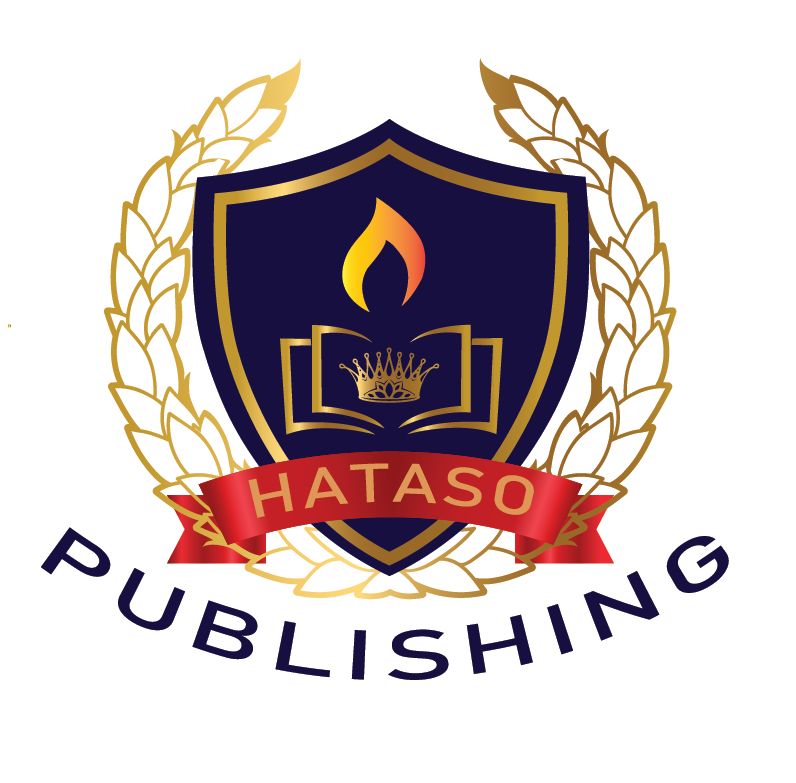

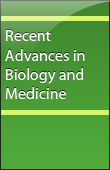
10.18639/RABM.2017.03.457021
Review Article
Jul 14, 2017
Diarrhea pathophysiology and constipation are multifactorial gastrointestinal (GI) disorders characterized by intestinal peristalsis disruption of and an irregularity in secretion/absorption process. Oxidative stress, as an imbalance in prooxidants/antioxidants, has recently been recognized as a significant player in these GI disturbances. In this respect, numerous studies were performed and have shown that the deleterious effects on GI tract were accompanied by accumulation of oxidants and depletion of antioxidant system. Antioxidant remedy is necessary in scavenging free radicals and reactive oxygen species preventing oxidative stress-induced GI interruptions.
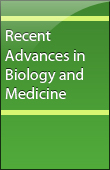
10.18639/RABM.2017.03.456895
HIV and AIDS
Jul 07, 2017
The emergence of a chronic medical illness such as Human Immune Deficiency Virus and Acquired Immunodeficiency Syndrome (HIV/AIDS) may be the time when people turn to the Sacred through spirituality and religion. HIV is a chronic illness that requires strict adherence to medication regimens that may be influenced by spirituality/religion. This study was aimed at finding the association between spirituality/religion and adherence to highly active antiretroviral therapy (HAART) in adult HIV/AIDS patients. This is a cross-sectional descriptive study of 370 patients. Adherence was measured using an adapted adult AIDS clinical trial group (AACTG) and visual analogue scale (VAS) tools. Spirituality was assessed using Functional Assessment of Chronic Illness Therapy-Spirituality Expanded (FACIT-Sp-Ex) scale, religiosity with Duke University Religion index (DUREL), and religious coping with Brief Religious Coping (RCOPE) scale. Adherence rates were 86.2 and 43.8% using AACTG and VAS tools, respectively. Statistical significant correlation was found between spirituality and adherence to HAART (r 5 0.265; p 5 0.00). Also, significant correlation was found between positive religious coping and adherence (r 5 0.15, p 5 0.003). Odds ratio indicated that female respondents were 1.6 times more likely to be adherent, compared with males. Similarly, every unit rise in spirituality score yielded a 1.3 times increased likelihood of adherence to HAART on multiple logistic regression of adherence to HAART with relevant predictors. Both spirituality and positive religious coping have positive influence on optimal adherence. Therefore, the training of health care personnel to assess and provide spiritual care and involvement of chaplains/religious leaders is advocated for improved adherence.
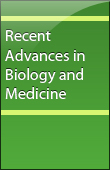
10.18639/RABM.2017.03.455029
Diabetes
Jun 26, 2017
The amount of glycosylated hemoglobin (HbA1c) reflects the long-term glycemic control of patients with diabetes. HbA1c also predicts the risk for the development of diabetic complications such as cardiovascular disease (CVD). Patients with type-2 diabetes and the characteristic of dyslipidemia are frequently found. Also, dyslipidemia plays as an independent risk factor for CVD. This study was aimed to evaluate the relationship between glycemic control status with serum individual lipid profiles and lipid ratios in patients with type-2 diabetes. This cross-sectional study consisted of 80 patients. Depending on the HbA1c level, the patients were divided into two groups, good glycemic control group (HbA1c 7.0%, n 5 15) and poor glycemic control group (HbA1c 7.0%, n 5 65). The association of HbA1c with individual lipids (TC, TG, HDL-C, LDL-C, Non- HDL-C) and lipid ratios (TC/HDL-C, TG/HDL-C, LDL-C/HDL-C, monocyte/HDL-C) were analyzed. The value of individual lipids and lipid ratios did not correlate with HbA1c level (p-value 0.05). Parameters of individual lipids and lipid ratios were not independently associated with poor glycemic control, which was analyzed by logistic regression. ROC analysis found both LDL-C and LDL-C/HDL-C were not accurate to be used as a prognostic indicator of poor glycemic control in patients with type-2 diabetes (p 5 0.155, p 5 0.297, respectively). The present study found that there was no association between individual lipids and lipid ratios with glycemic control status.
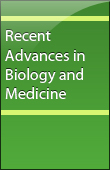
10.18639/RABM.2017.03.454939
Case Report
Jun 15, 2017
Threadlike filarial nematodes have been identified as the causative agent of filariasis. Cutaneous filariasis is caused primarily by Loa loa, Onchocerca volvulus, and Mansonella streptocerca. These parasites occupy the subcutaneous layer of the skin. However, other filarial parasites are usually associated with varying degrees of dermatological manifestations. In the present discourse, two cases of cutaneous filariasis were diagnosed in two female patients (21 and 40 years old, respectively) in Remitch Clinic and Maternity located in a nonriverine community in Ekpoma, Edo State, Nigeria. In this report, patients with body mass index (BMI) of 18.97 and 23.45 kg/m2, respectively, presented on two different occasions at least 6 months apart with hyperpigmented skin lesions in the upper and lower limbs, respectively. There was associated intense pruritus with no evidence of lymphadenopathy and lymphoedema. Following laboratory confirmation of filariasis, the patients were placed on a single oral dose combination of albendazole (400 mg) 1 ivermectin (200 mcg/kg), while oral doses of loratadine 10 mg were administered daily for 5 days. Patients were carefully followed up for 6 weeks during which recession of the lesion and untoward reactions were monitored. It was observed that within 6 weeks of treatment, there was a dramatic recession of skin lesion. Adverse effect reported from use of the combination was mild. This case report revealed that cutaneous filariasis is not an uncommon presentation of filariasis infestation in Nigeria. The report also validates the safety and efficacy of the combination in the management of cutaneous manifestation of the disease.
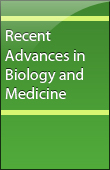
10.18639/RABM.2017.03.454927
Agriculture and Allied Sciences
Jun 15, 2017
Soil salinity is one of the most severe factors limiting growth and physiological response in cowpea plants. In the present study, the effect of rhizobacterium strains BR2 and BR3 on the growth of cowpea (Vigna unguiculata L.) varieties—Pusa Sukomal and RC101—tolerance to 0, 25, 50, and 75 mM concentrations of NaCl salinity was evaluated. The rate of growth, in general, was high in plants irrigated with 25 mM NaCl saline water as compared to control, and thereafter, the growth reduced with increase in salinity concentrations. The results revealed that treating the seeds with rhizobacteria accompanied by NaCl salinity increased growth parameters of the cowpea plant as compared to the seeds irrigated with sodium chloride alone. Treatment with rhizobacteria mitigated the harmful effect of NaCl, and the growth was significantly better than the plants growing in saline water without rhizobacterium inoculation. The overall performance of Pusa Sukomal with BR3 strain was found to be better than the other combinations tested. Flowering in field plants started within 45 days of sowing, and the seeds in plants irrigated with saline water, in the presence of rhizobacterium, were found to be healthy as compared to control seeds. Seed protein profile was analyzed by SDS PAGE gel studies.

10.18639/RABM.2017.03.452314
Original Research Article
May 18, 2017
Changes in consumption behavior to instant food cause various health problems, such as obesity, dislipidemia, and atherosclerosis. A study was conducted to investigate Moringa oleifera extract as an anti-inflammation product that decreases the levels of biochemical markers IL-1 and TNF-a. This experiment was done with randomized pre- and posttest control-group design, employing 40 Wistar rats separated into five groups: control group 0% M. oleifera leaf extract (P0), treatment group 1 with 10% M. oleifera leaf extract (P1), treatment group 2 with 15% M. oleifera leaf extract (P2), treatment group 3 with 20% M. oleifera leaf extract (P3), and treatment group 4 with 25% M. oleifera leaf extract (P4). This research observed that intake of 20% M. oleifera leaf extract results in the highest significant decrease of 15.42% of IL-1 level (134.64 6 1.98 to 113.87 6 4.30 pg/mL) and decrease of 45.63% of TNF-α level (28.62 6 1.25 to 15.56 6 7.20 pg/mL). Therefore, it can be concluded that intake of M. oleifera leaf extract by Wistar rat has anti-inflammatory effects on chronic dyslipidemia through decrease of IL-1 and TNF-α levels and histopathology profile. Further research is required to determine whether the application of M. oleifera leaf extract (daun kelor) in humans will have similar anti-inflammation effects.
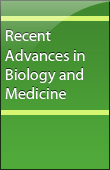
10.18639/RABM.2017.03.443040
Original Research Article
Apr 19, 2017
Cognitive dysfunction including dementia is a common complication of chronic kidney disease (CKD) that has just been recently appreciated. It has negative outcomes in the management of patients with CKD. This study explored the possible biochemical and clinical features of patients with CKD that can predict the occurrence of cognitive impairment in patients with moderate to severe CKD. We evaluate patients with stages 3-5 CKD for the occurrence and predictors of cognitive impairment. Multiple areas of cognitive function were tested in this single-center study using Community Screening Interview for Dementia (CSID) and Trial-Making Test A (TMTA)/Trial-Making Test B (TMTB). Cognitive impairment was correlated with patients’ routine biochemical, hematological, and selected clinical parameters. We observed a negative correlation between cognitive impairment and patient’s serum calcium (r 5 0.240; p 5 0.033) and estimated Glomerular filtration rate (eGFR) (r 5 0.379; p 5 0.0006). Therefore, eGFR is an accurate predictor of cognitive dysfunction in patients with moderate to severe CKD. Early evaluation of cognitive function in CKD is indeed advised for optimal outcome in the management of patients with CKD.
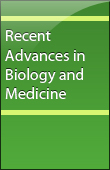
10.18639/RABM.2017.03.443648
Original Research Article
Apr 13, 2017
The prevalence of parasitic infections such as malaria, which leads to decrease in hematological indices, the major cause of anemia, constitutes a serious health challenge in many developing countries such as Nigeria. This study investigated the effect of methanol seed extract of Aframomum melegueta on selected hematological indices of 2,4-dinitrophenylhydrazine (2,4-DNPH)-induced anemic rats model. The toxicity study and qualitative phytochemical screening of the extract were carried out using standard procedure. Twenty Wistar rats were grouped into five of four rats each (n 5 4). Group I: Normal control; Group II: Negative control; Group III: administered 20 ml/kg b.w. of Astifer (Standard drug); Group IV and V were administered 200 and 400 mg/kg b.w. of the extract, respectively. The animals of Groups II to V were induced with 2,4-dinitrophenylhydrazine (20 mg/kg b.w.) once daily for seven consecutive days; their blood samples were collected by ocular puncture into heparinized capillary tubes for hematological analysis and animals with packed cell volume (PCV) 30% reduction were considered anemic for the study. The result of the qualitative phytochemical analysis showed that the methanol extract tested positive to alkaloids, carbohydrate, saponins, flavonoids, steroids, terpenoids, and anthraquinones. Acute toxicity and lethality studies on methanol extract showed an oral LD50 equal or less than 5000 mg/kg b.w. in mice. The rats administered 20 ml/kg b.w. of Astifer showed significant (P 0.05) increase in PCV, hemoglobin, red blood cell (RBC) count, white blood cell (WBC) count, and neutrophils count compared with the normal control animals. The rats administered 200 mg/kg b.w. of A. melegueta showed significantly (P 0.05) higher PCV and WBC count; non significant (P 0.05) decrease in hemoglobin count, RBC, platelet, neutrophils and lymphocyte count compared with the normal control animals. The rats administered 400 mg/kg b.w. of A. melegueta showed significant (P 0.05) increase in hemoglobin, platelet, erythrocyte sedimentation rate (ESR) and neutrophils count; non significant (P 0.05) lower PCV, RBC, WBC count, and lymphocyte count compared with anemic rats administered with 0.3 ml of normal saline. It can be concluded that Aframomum melegueta seed has beneficial immunological and hematological properties in Wistar rats and possessed erythropoietic potentials at minimal dose that support its use for treating anemia.
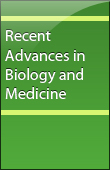
10.18639/RABM.2017.03.355635
Original Research Article
Feb 17, 2017
Deep eutectic solvents as a new type of eco-friendly solvents have attracted attention in chemistry, medicine, and other fields for the extraction and separation of target compounds from medicinal plants. Deep eutectic solvents are easy to prepare and have many advantages as solvents, such as chemical inertness with water, low cost, easy biodegradability, and pharmaceutically acceptable toxicity. In this study, a deep eutectic solvent made up of choline chloride-glycerol (1:2) was used for the extraction of flavonoids from Catharanthus roseus plant parts (flower petal, leaves, stem, and root). The highest amount of phenolic content was detected in flower petal, that is, 194.50 mg GAE/g. In DPPH test, the maximum amount of antioxidant activity determined in the flower petal was 73.13%; IC50 was calculated by using a linear regression equation; IC50 value of the standard, stem, root, leaf, and flower petal was 13.22, 90.44, 83.93, 120.14, 79.49 μg/ml, respectively. The result of this research is that Catharanthus roseus has a compatible antioxidant activity. This can be helpful for the treatment of diseases caused by free-radical oxidative stress.
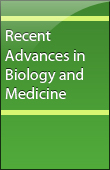
10.18639/RABM.2017.03.347628
Original Research Article
Feb 04, 2017
Green technology is the most important topic in the pharmaceutical field because it reduces the cost of medicines and minimizes the environmental impact of the field and is better for human health and safety. Green chemistry emphasizes that the solvent should be nontoxic, safe, cheap, green, readily available, recyclable, and biodegradable. Deep eutectic solvents, a new type of green solvent, have some renowned properties—for instance, high thermal stability, low vapor pressure, low cost, biodegradability, and high viscosity. In this study, deep eutectic solvents made up of choline chloride-glycerol (1:2) were used for the extraction and isolation of flavonoid (rutin, gallic acid, and quercetin) from Catharanthus roseus plant parts, flower petal, leaves, stem, and root. The amounts of rutin and quercetin in flower petal are 29.46 and 6.51%, respectively, whereas, rutin, gallic acid, and quercetin amounts in leaves are 25.16, 8.57, and 10.47%, respectively. In stem the amounts of rutin, gallic acid, and quercetin are 13.02, 5.89, and 7.47%, respectively. In root, only quercetin has been obtained that is 13.49%. The HPLC is an analytical method, which was found to be an excellent technique for determination of rutin, gallic acid, and quercetin using deep eutectic solvent extraction from plant parts of Catharanthus roseus.

10.18639/RABM.2016.02.341436
Case Report
Dec 20, 2016
Congenital rubella syndrome (CRS) is a consequence of rubella infection that can occur when the virus is transmitted in utero during maternal primary infection. A newborn male baby was admitted for delayed cry, respiratory distress, having a birth weight of 2,150 g. A history of consanguinity marriage of parents. Intrauterine growth restriction (IUGR), cataractous lens, patent ductus arteriosus (PDA), and a positive serology test are present. Vaccination at high-risk groups is necessary in order to avoid the appearance of CRS.

10.18639/RABM.2016.02.335391
Diabetes
Nov 27, 2016
Type 2 diabetes mellitus (T2DM) is one of the threatening disorders in the world. It affects people of all ages. Type 2 diabetes mellitus is a condition in which the glucose level in the blood is elevated due to improper function of the secretion of insulin from beta cells of the pancreas. It is a multifactorial disease because it is caused by both environmental and hereditary factors. One of the genes which play an important role in type 2 diabetes mellitus is SLC30A8 which encodes for zinc transporter ZnT8. The common polymorphic site for SLC30A8 is rs13266634. This single-nucleotide polymorphism leads to type 2 diabetes mellitus by replacing the arginine residue with tryptophan residue. This review mainly focuses on the polymorphic studies in the gene SLC30A8 and its association with type 2 diabetes mellitus.

10.18639/RABM.2016.02.341789
Agriculture and Allied Sciences
Oct 17, 2016
Pollution in water bodies and soil is a major and ever-increasing environmental issue nowadays, and most conventional remediation approaches do not provide appropriate solutions. The contamination of soil is a major concern for the environment and needs to be remediated. These pollutants include complex organic compounds, heavy metals released from industries and plants and natural products such as oils from accidental release. Further the nature of pollution will be governed by the source and type of the contaminant, and other inorganic compounds are released into the environment from a number of sources like mining, smelting, electroplating, and farming. Plants can clean up many types of contaminants like metals, pesticides, oils, and explosives. Phytoremediation is emerging as a bio-based and low-cost alternative in the cleanup of heavy metal-contaminated soils.

10.18639/RABM.2016.02.343082
Original Research Article
Oct 17, 2016
Dysmenorrhea is a notably serious crisis among young adult girls and it distresses their quality of life. After menarche, most young adult girls suffer severe pain, irregular menses, too much bleeding, and dysmenorrhea. It is a common gynecological complication affecting more than half of the young adult girls resulting in episodic school absenteeism coupled with a negative impact on social behavior, educational, and sports activities. This study was a cross-sectional descriptive, conducted from September to November 2013 among 210 young adult, female medical students of Management and Science University, using a semi-structured questionnaire. The questionnaire used in this study was associated with the health-related quality of life among young adult girls; questions were related to demography, family menstrual history, prevalence, symptoms, absentees of school, involvement in sports activities, and self-care strategies. This survey was completed and the data was analyzed for the results with percentages and chi-square test applied.

10.18639/RABM.2016.02.338815
Toxicology and Pharmacology
Oct 01, 2016
The genus Aconitum has been reviewed for distribution in the world, traditional use, isolated chemical constituents, and pharmacological activities of some common species. Aconitum species are traditionally used throughout Asia, particularly in China and Japan, as an analgesic and antiinflammatory medicine. Lappaconitine and Yunaconitine are common chemical constituents that may justify the use of these species as analgesic and antiinflammatory agents in Asian traditional medicine. The aim of the present paper is to further review the comprehensive knowledge of the plants of this genus including the traditional uses, chemical constituents, and pharmacology.